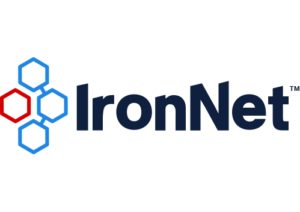Supply chain complexity is rising, and the public and private sectors are stronger together. The resulting approach is called cyber collective defense, and it’s changing how businesses and the federal government protect their supply chains.
To learn more, GovLoop spoke with Jamil Jaffer, Senior Vice President for Strategy, Partnerships & Corporate Development at IronNet Cybersecurity, a global cybersecurity leader who is delivering the first-ever collective defense platform to secure enterprises, industries and governments.
1. Understand your agency’s threat landscape
Agencies that map out their entire supply chains are more prepared for responding to a cyberthreat landscape that changes daily. According to Jaffer, agencies are in an unusual predicament when it comes to supply chain security. “The federal government relies on contracting with small businesses and large corporations,” he said. “Each of these has their own cybersecurity vulnerabilities and risks.”
To defend themselves, Jaffer recommends that agencies ensure their suppliers identify and monitor all the data, processes and systems involved in their supply chains to defend them as a single ecosystem. “Rather than relying on entities in the supply chain to defend against the most capable threat actors, including Russia, China, Iran and North Korea, agencies should have their suppliers share critical threat information in real-time to defend the entire supply chain as a whole,” said Jaffer.
2. Create shared situational awareness and collaboration
Legacy information sharing processes are designed to react after a cyberattack is underway or once a threat has been identified. According to Jaffer, in the modern environment, agencies and their suppliers need to get ahead of threats and identify them faster. “Attackers are moving rapidly,” he said. “If our threat sharing and cyber collaboration isn’t happening in real-time, and if we aren’t focused on the behaviors that indicate preparations for an attack, we’ll continue to fall far behind the attackers.”
Cyber collective defense addresses these problems by having multiple agencies, along with their suppliers, work collectively to defend against an attack. For instance, agency security operations centers (SOC) can share threat information with their suppliers and other agencies to triage threats, enabling more flexible, rapid defense. “By creating a common operating picture across multiple vendors and agencies, each individual agency can identify threats that might otherwise have gone unnoticed in a single environment,” said Jaffer. “And, perhaps most importantly, they can leverage each other’s resources,” Jaffer said of cooperating agencies and suppliers. “They can work together in identifying and defending across each other’s entire threat landscape. In addition, this approach helps solve the problem of limited staff resources and cyber tools that all of our agencies face.”
3. Focus on resilience and recovery
Unfortunately, supply chains are so complex that security incidents are often a question of if, not when. According to Jaffer, agencies that quickly share information and resources are better equipped to withstand and recover from such attacks. “It’s important to have the right systems in place when attackers come,” he said.
What do the right systems look like? According to Jaffer, supply chains thrive when agencies have a cyber collective defense platform that enables the identification of breaches faster and allows quick reaction times for defenders. “Being able to identify an attacker faster and take action against them is critical to limiting the impact of an attack and to restoring services,” said Jaffer. Platforms such as IronNet’s combine collaboration with rapid threat-sharing. The outcome is agencies that can read and react to any situation involving their supply chains at a moment’s notice. “We provide a cybersecurity umbrella over our private-sector partners and federal agencies,” Jaffer said. “They can collaborate in real-time to divide and conquer when it comes to stopping threats.”
This article is an excerpt from GovLoop’s recent report, “Meeting the Requirements of the Supply Chain Imperative.” Download the full report here.






Leave a Reply
You must be logged in to post a comment.